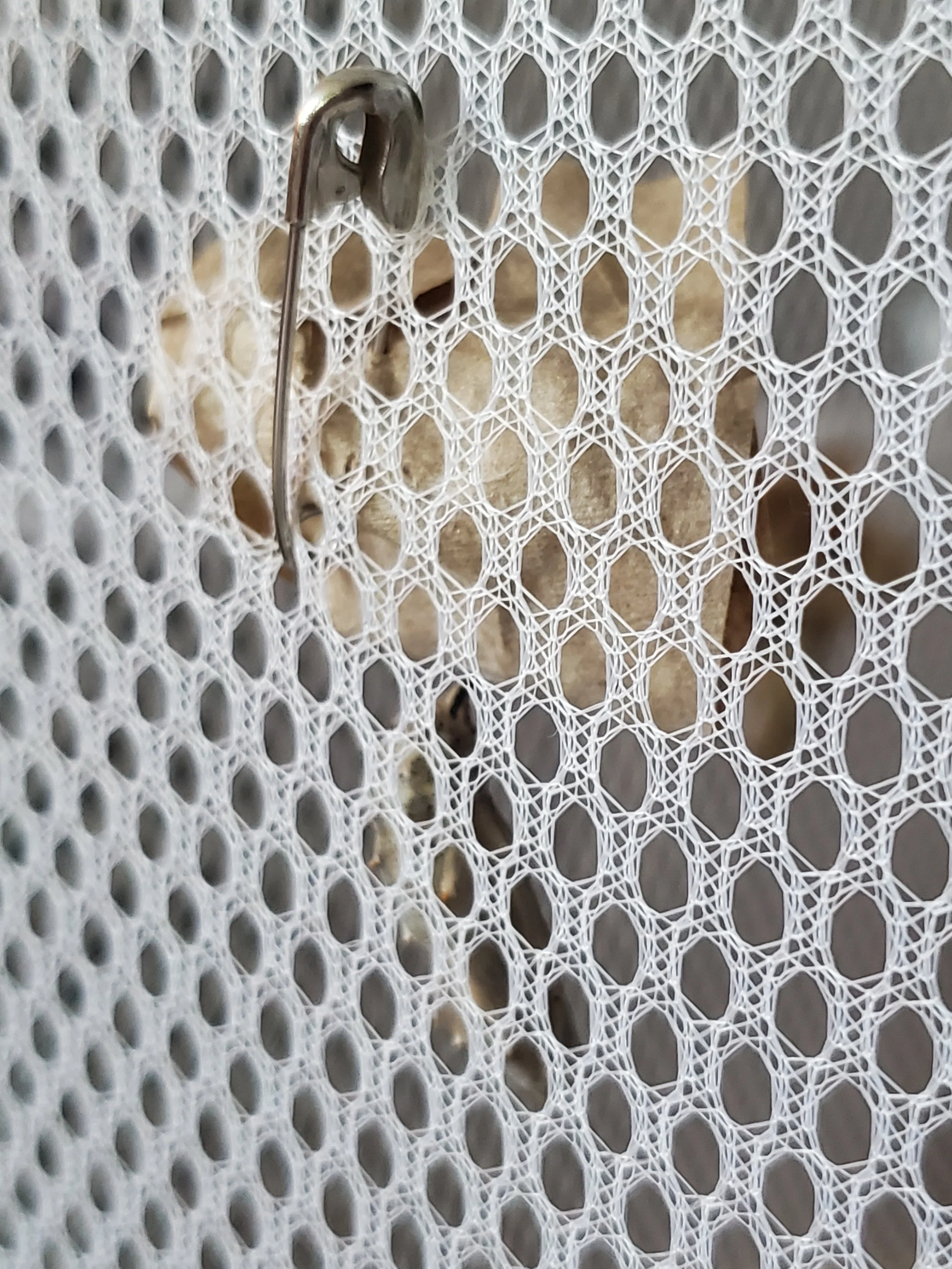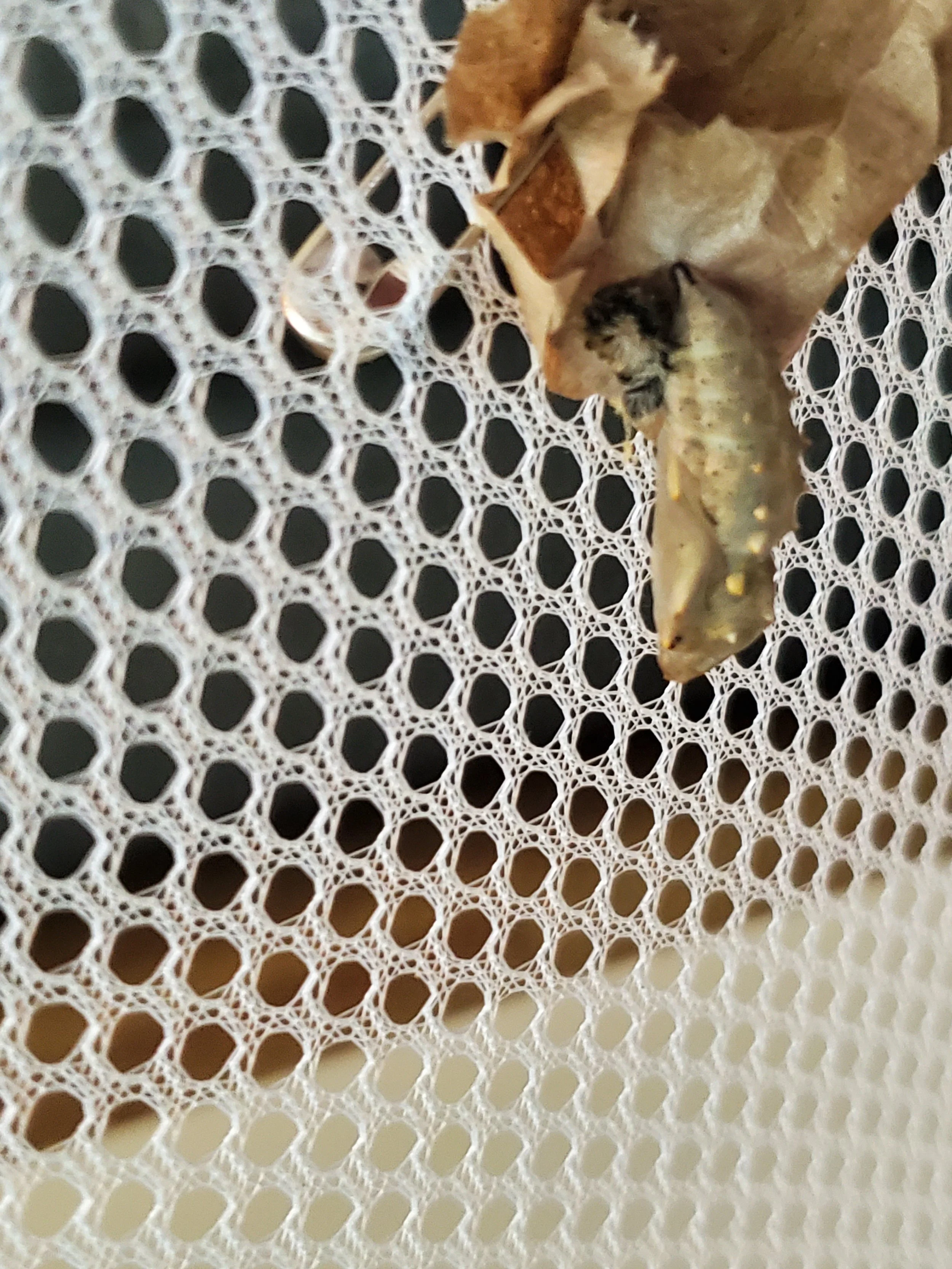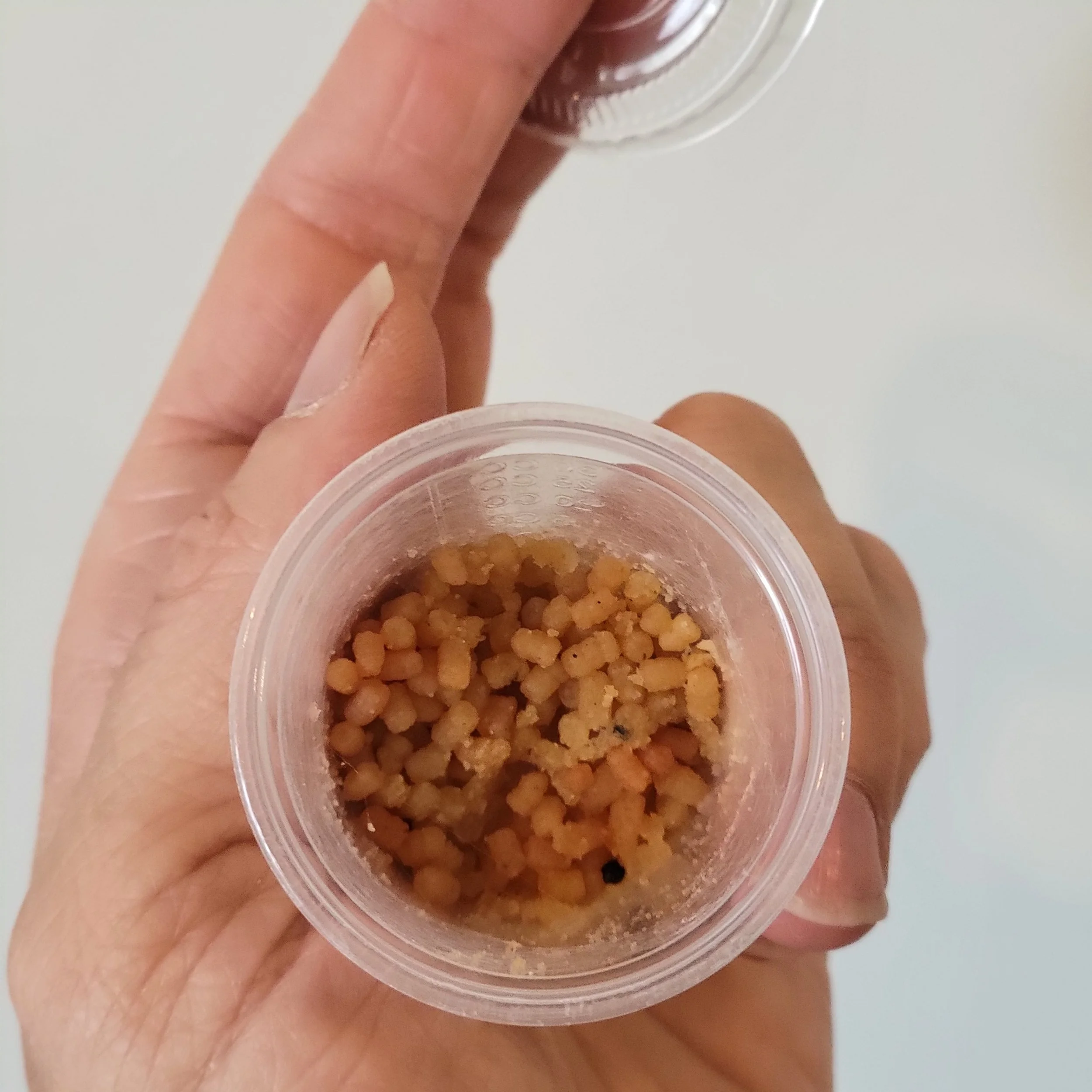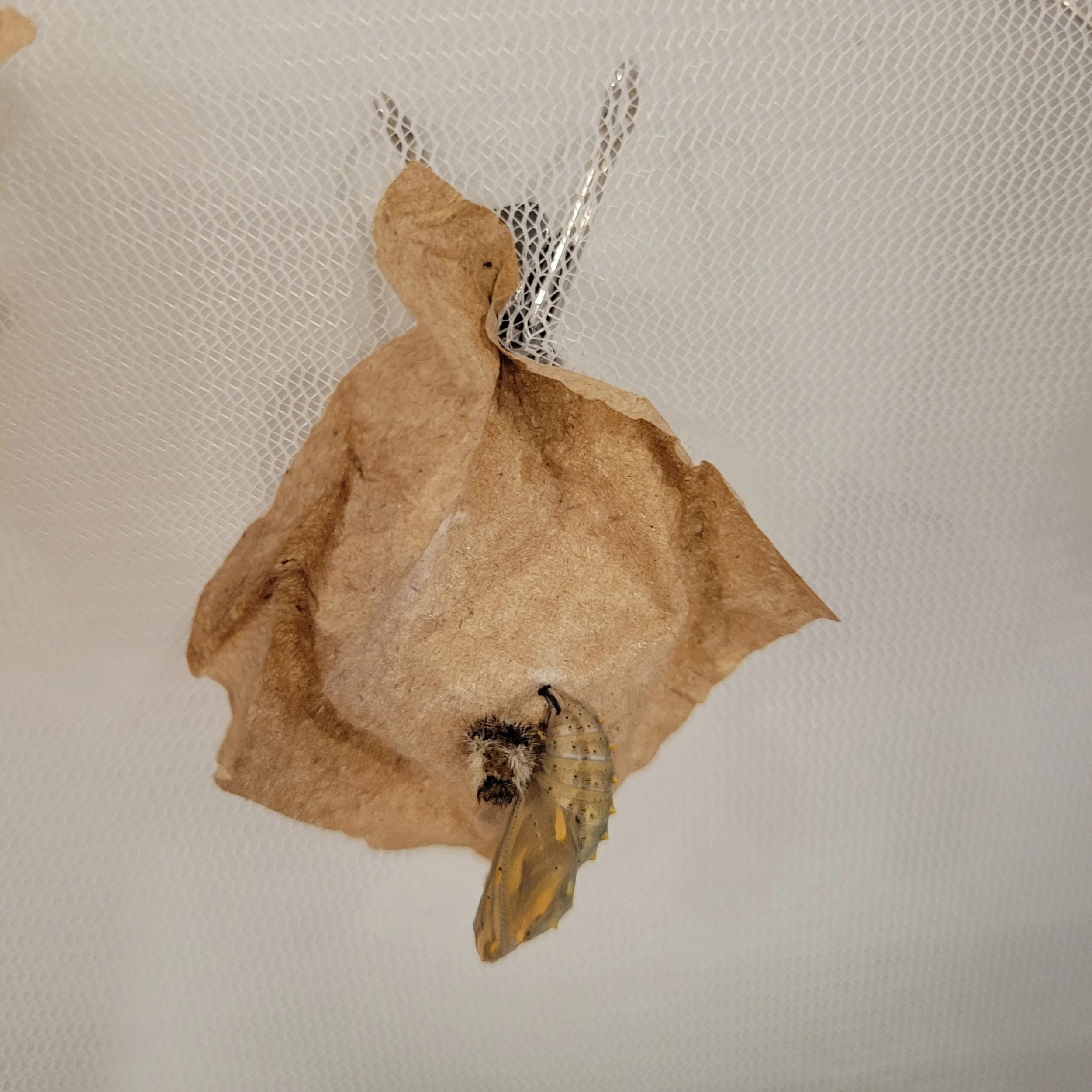FAQs-
Simply place your chrysalis on a paper towel at the bottom of your enclosure. While hanging is natural, your butterfly will still successfully emerge from a chrysalis lying flat.
-
Using a safety pin, find a spot on the paper where the chrysalis isn’t attached. Place the paper with the chrysalis inside the enclosure, and from the outside, pin the paper to the mesh so the chrysalis hangs securely next to the netting. This gives the butterfly space to emerge safely and hang its wings to dry.
* a clip can also be used, see image below
-
Caterpillars don’t move around much—even in the wild! That’s because they need to conserve energy and store nutrients to successfully transform into a butterfly in just a matter of days. Without enough energy reserves, metamorphosis may fail. During molting, they move even less. Molting is the process of shedding their skin—much like a snake—so they can grow. Thistle caterpillars typically molt five times before forming a chrysalis.
-
When a butterfly first emerges from its chrysalis, its wings are crumpled and soft. To form properly, the butterfly must immediately hang and pump a fluid from its abdomen into the veins of its wings. This fluid helps the wings straighten and harden into their final shape.
If a butterfly struggles to fully emerge from the chrysalis or doesn't find a place to hang right away, it may miss this critical step. In some cases, the wings remain crumpled or misshapen. While this is a natural part of the life cycle, we don’t often see it in the wild—because butterflies that don’t complete this process usually become part of the food chain.
Rest assured, you didn’t do anything wrong. This is part of nature, and every butterfly's journey is unique.
-
Those round balls are called frass—that’s the scientific word for caterpillar poop! Frass often looks the same color as the caterpillar’s food, but you can tell the difference because frass is round while the food appears flat and compressed.
In the wild, caterpillars live on their host plant leaves. In your cup, they live directly on their food. When too much frass builds up, it can cover the food and make it harder for your caterpillar to reach fresh, nutritious spots.
To keep your caterpillar healthy, gently remove it using a Q-tip and place it on a paper towel. Then, dump the loose frass into the garbage. While you're at it, you can also remove the webbing. This gives your caterpillar a clean environment and the chance to rebuild its webbing—an important step in preparing for a strong chrysalis.




